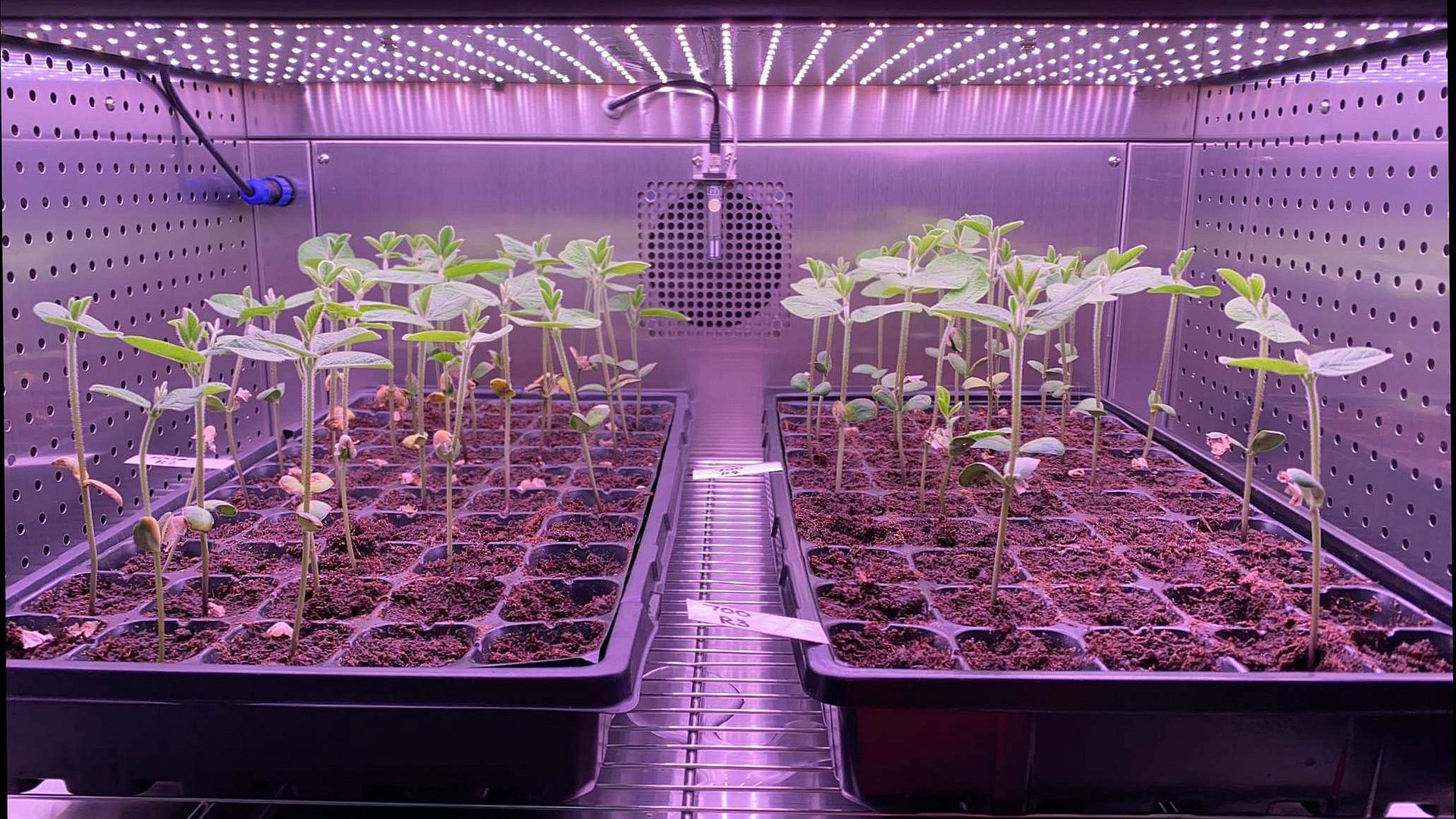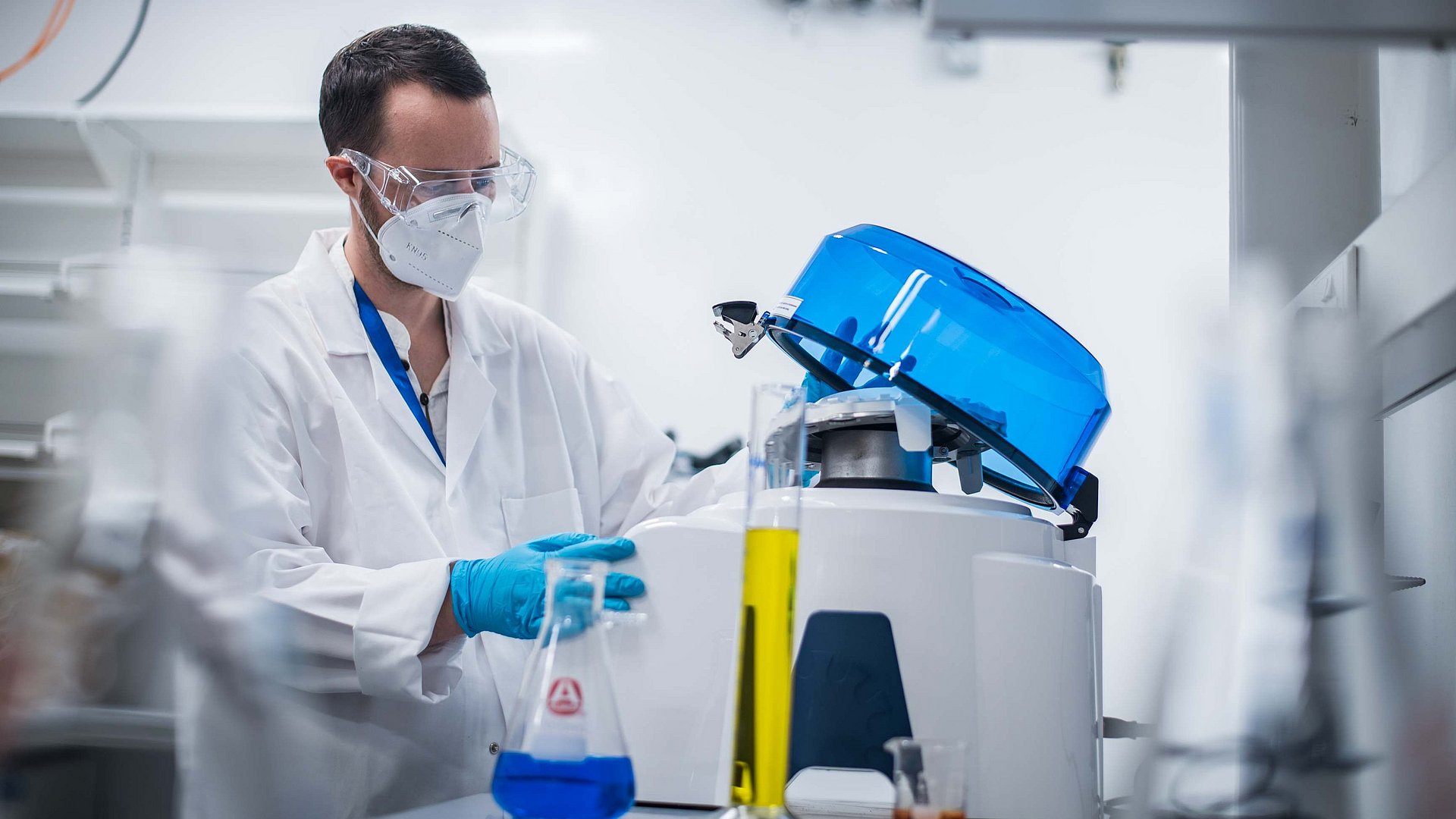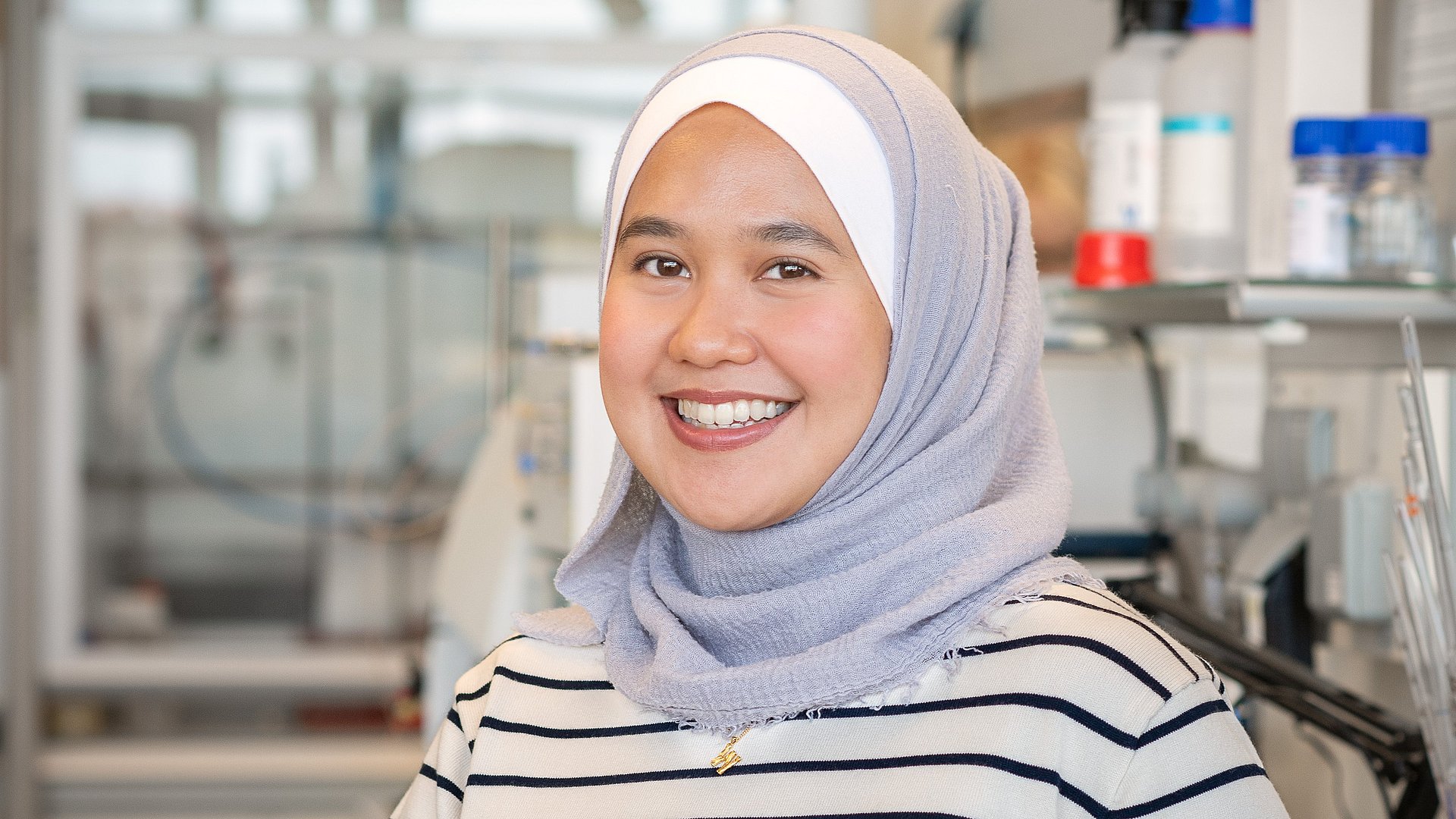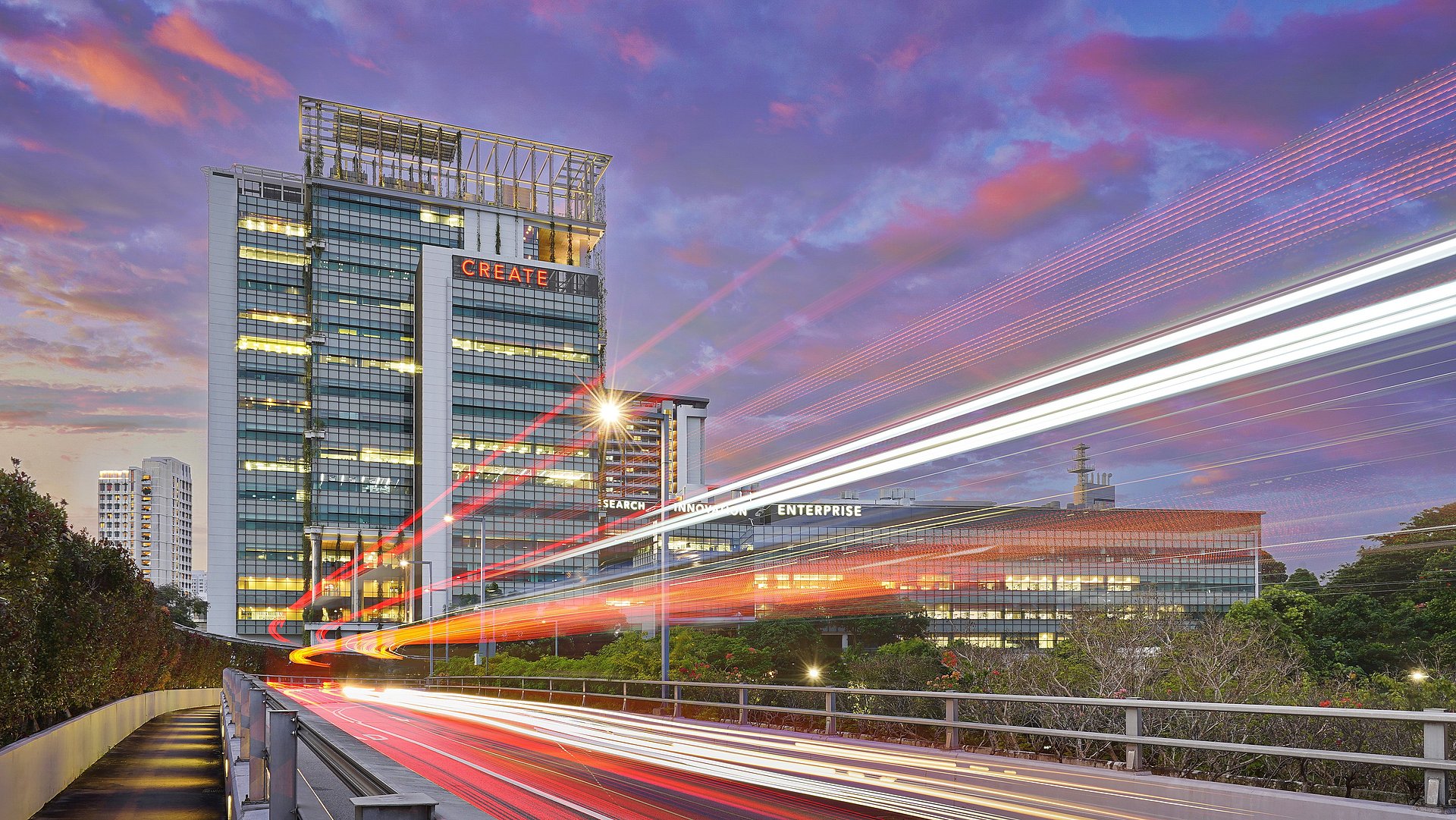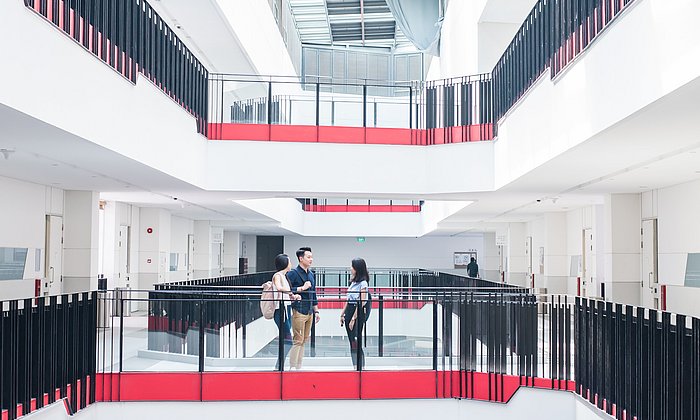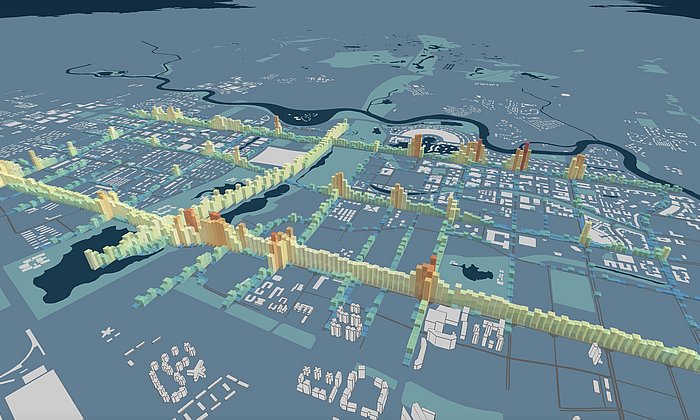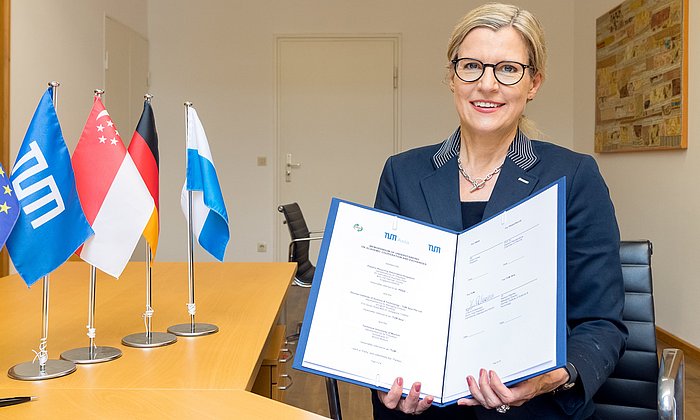Food research in Singapore
Proteins for a megacity
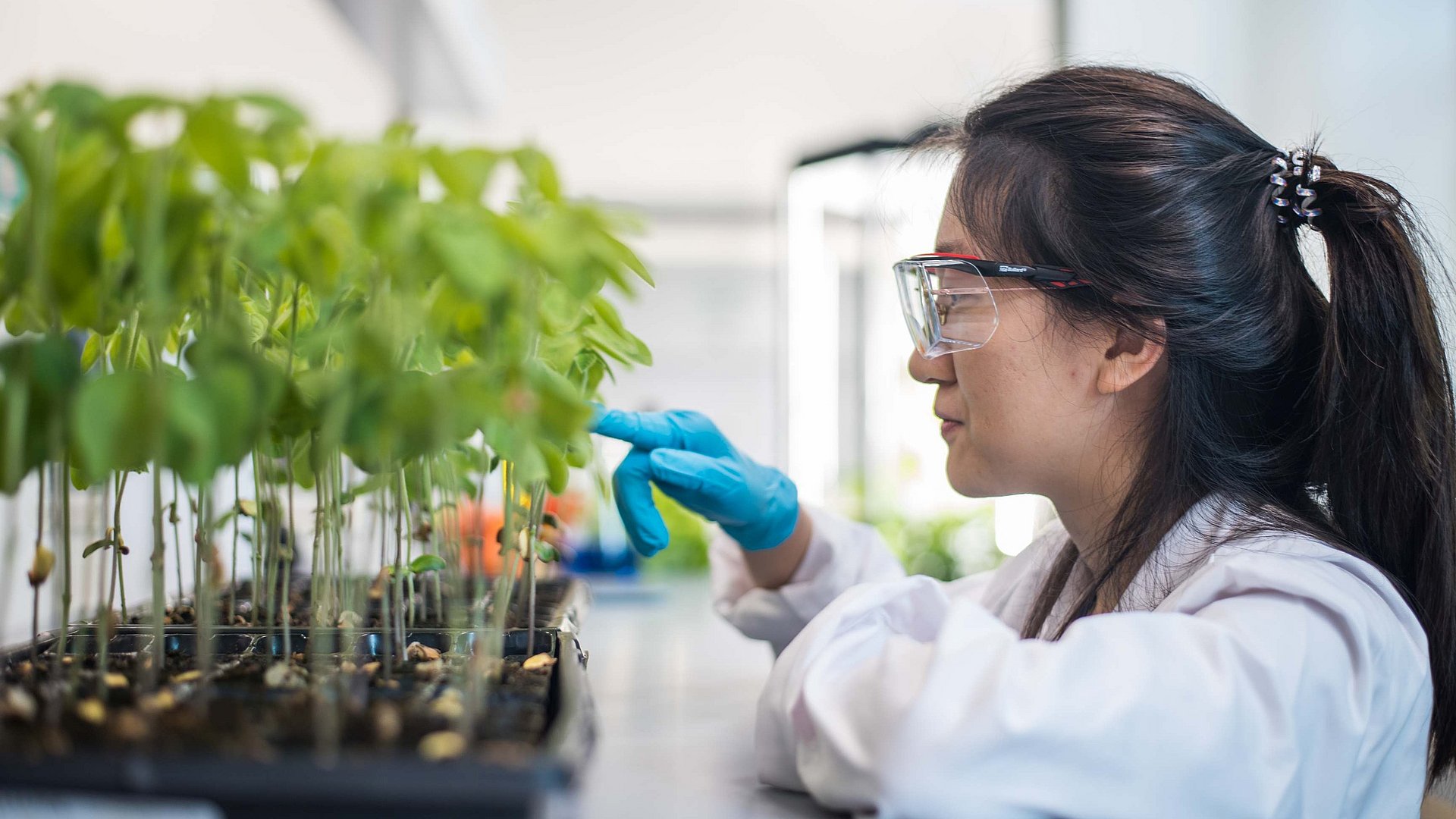
Oliver Watkins opens the door to the growth chamber, an enclosed plant cabinet as high as a full-sized refrigerator. Inside the chamber, soy plants are growing, bathed in violet light, in orderly rows stacked on four levels, one on top of the other. "My colleagues can regulate the supply of light, water, and fertilizer independently and thus control how the plants grow. No additional pesticides are necessary," the chemist says on his tour through the laboratory in the CREATE Tower, a high-rise research complex in the southwest of Singapore. "The decisive advantage is that vertical farming requires so little space."
A high-tech metropolis, short on resources
Singapore's approximately 5.7 million residents live in an area roughly the size of the city of Hamburg. The Southeast Asian metropolis lacks farmland: Residential development and infrastructure projects have consumed all but one percent of the arable land. In response to this situation, Singapore's government has announced the goal of locally producing one third of the food consumed here. In 2019, the figure was still less than 10 percent. The city-state hopes to cut down its dependence on imports and to soften the impact of supply bottlenecks and price fluctuations on the international food market. As part of its “30-by-30 initiative”, Singapore is heavily investing in research projects on sustainable aquaculture, urban farming and new food technologies.
A vision of the final food product
One of these projects is Proteins4Singapore. About 40 researchers from TUMCREATE, Nanyang Technological University and other academic and industrial partner institutions are working on protein-rich foods which can be used like meat or tofu. "We're not trying to optimize familiar foodstuffs, we're starting at the finish line and asking ourselves: What do we want to produce, and what raw materials and processes can be used to achieve that best?" says Thomas Becker, program lead and Professor of Brewing and Beverage Technology. In the field of food technology, this approach is referred to as Reverse Food Engineering. "Our objective is healthy, high-protein food products which taste good to the people here in Singapore and which can be produced right here as sustainably as possible. It should taste like chicken and when you bite into it, the texture and consistency should remind you of chicken," Becker says.
The researchers are evaluating the food production process from the beginning to the end, looking for suitable raw materials and cultivation technologies. They are experimenting with various processing methods, ranging from protein hydrolysis and fermentation and even to 3D printing. "The special thing about our project is its comprehensive approach: The team covers the entire production process. Our researchers can take all the different perspectives, from agricultural sciences, food chemistry, food technology, all the way to sensor technologies," says Prof. Becker.
You have to know how taste perception works on the molecular level before you can specifically influence it.
PhD candidate
Algae that taste like chicken
Nadyssa Willanda is one of the researchers responsible for the flavor of the target protein products. Based in Singapore, she is working on her doctorate with Prof. Corinna Dawid from the TUM School of Life Sciences, another investigator in the project. Nadyssa does research on algae, which in addition to soy is one of the most interesting resources for alternative protein products. Algae can be produced in so-called photo-bioreactors; the only nutrients they need are nitrogen, phosphorus and some micronutrients. "In the first step, we identify and quantify the components of the microalgae biomass which are active in taste and aroma," Nadyssa Willanda explains.
In a second step, the growth and extraction conditions are optimized to obtain algae proteins that resemble chicken meat in terms of the sensory perception of the product. "You have to know how taste perception works on the molecular level before you can specifically influence it," says Willanda. "For example, you can modify manufacturing conditions or add enzymes." The researcher is originally from Indonesia and can imagine that the finished protein product will be well-accepted later in Singapore: "Soy and algae products have long been a part of Southeast Asian cuisine." But people in Singapore are also very open to other cultures and their food. The best example of that are the Hawker Centres: These food courts are listed as UNESCO World Heritage Site. It’s easy to feel the influences of Chinese, Malay and Indian cuisine combined.
A small city-state with big ideas
High diversity in a small space – according to Michael Rychlik, that holds true for research in Singapore as well. "Singapore is an academic hub. Many international top universities maintain a presence here. The city-state knows how to attract cutting-edge level researchers from all over the world," says the TUM Professor of Analytical Food Chemistry, responsible for food safety aspects in the Proteins4Singapore project. In addition to his research, he has also taught at TUM Asia, the TUM teaching campus in Singapore. Modern classrooms, a high degree of digitalization and the enthusiastic participation of the students in this city have impressed him from the very start. "Singapore is highly competitive," Prof. Rychlik says, adding: "but the fact that everything takes place within such a small space almost automatically results in collaboration and interdisciplinary approaches."
"Singapore is so tiny. You easily come into contact with other research topics and you turn into a real all-rounder," Oliver Watkins confirms. Together with colleagues from TUMCREATE, he's responsible for the analytical instruments like the high-resolution mass spectrometer. He appreciates the broad approach of the Proteins4Singapore project: "People from around the world work together, from widely differing disciplines – that’s incredibly inspiring."
TUMCREATE was founded in 2010 as a research campus in order to facilitate research partnerships between Singapore and TUM. It is part of the Campus for Research Excellence and Technological Enterprise (CREATE), funded by the National Research Foundation Singapore. In this community, TUM has the opportunity to collaborate with globally leading universities as well as with local institutions. In cooperation with the teaching colleagues at TUM’s education facility TUM Asia, the researchers also investigate topics like electro-mobility, biomedical technologies, or sustainable energy systems.
Technical University of Munich
Corporate Communications Center
- Christian Schnurr, Undine Ziller
- tumcampus@tum.de
- presse@tum.de
- Teamwebsite
